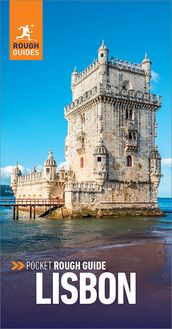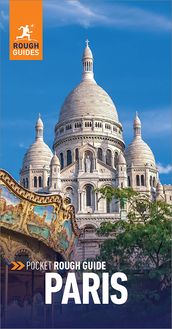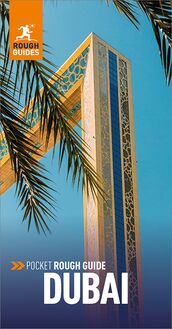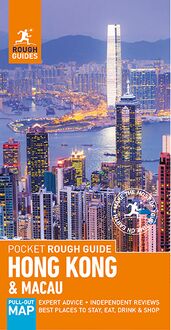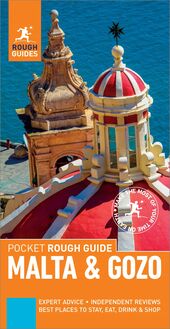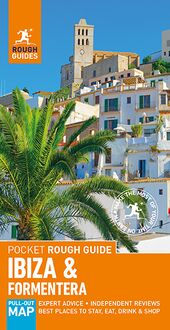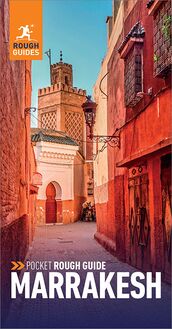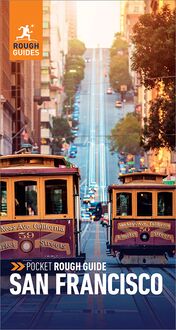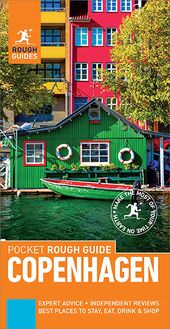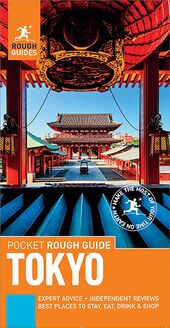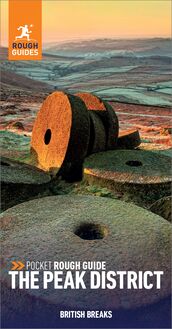-
 Univers
Univers
-
 Ebooks
Ebooks
-
 Livres audio
Livres audio
-
 Presse
Presse
-
 Podcasts
Podcasts
-
 BD
BD
-
 Documents
Documents
-
- Cours
- Révisions
- Ressources pédagogiques
- Sciences de l’éducation
- Manuels scolaires
- Langues
- Travaux de classe
- Annales de BEP
- Etudes supérieures
- Maternelle et primaire
- Fiches de lecture
- Orientation scolaire
- Méthodologie
- Corrigés de devoir
- Annales d’examens et concours
- Annales du bac
- Annales du brevet
- Rapports de stage
La lecture à portée de main
Vous pourrez modifier la taille du texte de cet ouvrage
Découvre YouScribe en t'inscrivant gratuitement
Je m'inscrisPocket Rough Guide Hong Kong & Macau (Travel Guide eBook) , livre ebook
Découvre YouScribe en t'inscrivant gratuitement
Je m'inscrisEn savoir plus
Vous pourrez modifier la taille du texte de cet ouvrage
En savoir plus

Description
Discover these exciting destinations with the most incisive and entertaining travel guide on the market. You can take this handy, pocket-sized book out with you anywhere, anytime.
Whether you plan to admire the Tian Tan Big Buddha, feast on seafood at Temple Street Night Market or go pink-dolphin spotting, Pocket Rough Guide Hong Kong and Macau will show you the ideal places to sleep, eat, drink, shop and visit along the way.
Perfect for short trips - compact and concise, with all the practical info you'll need for a few days' stay. Free pull-out map, as well as full-colour maps throughout - navigate the pedestrianised Three Lamps District oramble along the Avenue of Stars waterfront promenade without needing to get online.
Things not to miss - our rundown of Hong Kong's unmissable sights and experiences.
Itineraries - carefully planned days to help you organize your visit.
Independent, trusted reviews written with Rough Guides' trademark blend of humour, honesty and insight, with options to suit every budget.
Stunning images - a rich collection of inspiring colour photography.
Detailed city coverage - whether visiting the big sights or venturing off the tourist trail, this travel guide has in-depth practical advice for every step of the way. Chapters cover each neighbourhood in depth, with all the sights and the best of the nearby shops, cafes, restaurants and bars.
Areas covered include: Hong Kong Island (including Central, Kennedy Town, Wan Chai, Causeway Bay, Happy Valley and the south side); Kowloon (including Tsim Sha Tsui, Jordan and Diamond Hill); The New Territories; Lamma; Cheung Chau; Macau.
Attractions include: Maritime Museum; Ocean Park; Temple Street; ShamShui Po; Kam Tin.
Day-trips - venture further afield to Lantau,Coloane, Taipa Village,Tai Mo Shan or Kadoorie Farm. Accommodation - our unbiased selection of the top places to stay, to suit every budget.
Essentials - crucial pre-departure practical information including getting there, local transport, tourist information, emergency numbers, festivals, events and more.
Background information - an easy-to-use chronology, plus a handy Cantonese language section and glossary.
Make the Most of Your Time on Earth with Pocket Rough Guide Hong Kong and Macau.
About Rough Guides: Escape the everyday with Rough Guides. We are a leading travel publisher known for our "tell it like it is" attitude, up-to-date content and great writing. Since 1982, we've published books covering more than 120 destinations around the globe, with an ever-growing series of ebooks, a range of beautiful, inspirational reference titles, and an award-winning website. We pride ourselves on our accurate, honest and informed travel guides.
Sujets
Informations
| Publié par | Apa Publications |
| Date de parution | 02 décembre 2018 |
| Nombre de lectures | 0 |
| EAN13 | 9781789195217 |
| Langue | English |
| Poids de l'ouvrage | 29 Mo |
Informations légales : prix de location à la page 0,0374€. Cette information est donnée uniquement à titre indicatif conformément à la législation en vigueur.
Extrait
CONTENTS Introduction to Hong Kong When to visit What’s new Where to… Hong Kong and Macau at a glance --> Things not to miss Itineraries Places Hong Kong Island: Central to Kennedy Town Hong Kong Island: Wan Chai, Causeway Bay and Happy Valley Hong Kong Island: the south side Kowloon: Tsim Sha Tsui Kowloon: Jordan to Diamond Hill The New Territories Lantau Lamma and Cheung Chau Macau Accommodation Essentials Arrival Getting around Directory A-Z Festivals and events Chronology Language Glossary Maps and Small Print
Hong Kong and Macau
Facing each other across the Pearl River estuary, Hong Kong and Macau offer an exciting yet easy entry into the Chinese world. Colonies of Britain and Portugal respectively until they were returned to mainland China in the 1990s as Special Administrative Regions (SARs), today their southern Chinese heritage is increasingly apparent. Among the hi-tech infrastructure and the population’s Westernized outlook, conservative traditions persist, from shrines to the god of wealth and age-old festivals, to the way contemporary architectural design takes principles such as feng shui into account. Former colonial ties are most obvious in the fact that many people speak English as well as Cantonese, and in Macau’s decidedly un-Chinese antique buildings.
Lok Ke Wan beach
Shutterstock
Tai Mo Shan
iStock
Hong Kong’s famously futuristic harbourside architecture has long set the standard for similar cityscapes rearing up all over Asia. There’s also a broad mix of other architectural styles here, encompassing Mong Kok’s ramshackle town housing, traditional clan villages in the New Territories, Tai O’s stilt-houses and the centuries-old temples which are dotted around. The accompanying markets and street life are compellingly frenetic, while the shopping – though no longer a bargain – offers the chance to compare a vast range of products sold everywhere from open-air stalls to hi-tech malls. Hong Kong is also one of the best places in the world to eat Cantonese food, while the territory’s Western influence means there’s a plentiful selection of bars and nightspots.
Surprisingly, Hong Kong’s outlying areas remain fairly undeveloped, with a countryside of beaches, rugged hills, wild coastline and islands – although none of it especially remote – where you can escape the pace and claustrophobia of the downtown areas. Hong Kong’s only real downside is that the overwhelming commercialism and consumption make it hard to engage with the underlying Chinese culture – though you can glimpse it at Happy Valley’s horse races, Mong Kok’s Bird Market or simply by watching early-morning tai chi practitioners going through their routines in Kowloon Park. Cultural barriers also drop at the several annual Chinese festivals sprinkling the calendar – Chinese New Year, the Dragon Boat Races and Cheung Chau Bun Festival are the liveliest – when even visitors will find it hard not to get caught up in the action.
When to visit
Hong Kong and Macau are tropical , which means generally humid conditions throughout the year. From December to February is the coolest period (16ºC), though usually dry; temperatures rise from March through to May (23ºC) and rainfall increases; while from June until September the weather is steaming hot (30ºC), often with fearsome typhoons (from the Chinese tai fung – “big wind”), whose storms affect sea traffic. Tourist levels are even year-round, but book accommodation in advance, especially for international sporting events and for Chinese New Year in January or February.
What’s new
Limited space and a craze for cutting-edge architecture means that large-scale land reclamation and enormous construction projects have long been a fact of life in Hong Kong. Current builds include a third airport runway and an Imperial Palace Museum at West Kowloon page 71 )-->. In October 2018, a 55km-long road bridge, spanning the Pearl River estuary to the Chinese city of Zhuhai page 112 )-->.
Smaller and more visually attractive than its neighbour, Macau is also ethnically Chinese, but its charms rest more on its backdrop of old Portuguese churches, forts and streets, which lend the place a colonial-tropical ambiance. Its tiny scale means you can see just about everything on an easy day-trip from Hong Kong, while its superb food marries Portuguese, Chinese, Goan, Brazilian and African influences, washed down with Portuguese port and brandy. As far as the Chinese are concerned, however, Macau’s main appeal is in its many casinos – it’s the only place on Chinese territory where they are legal – which draw in swarms of punters from Hong Kong and mainland China.
Grand Lisboa Casino, Macau
Alamy
Back to Introduction
Where to…
Shop
Thanks to internet shopping, the affordable electronics gear Hong Kong was once famous for is no longer a particularly good deal, though you will be able to lay your hands on just about every model and brand of computer, camera, smartphone and tablet available at specialist warehouses in Wan Chai, Mong Kok and Sham Shui Po. Jewellery shops are everywhere in Central, Tsim Sha Tsui and Mong Kok, and the same goes for clothing, with various bargains available in Mong Kok, Sham Shui Po and on Ap Lei Chau island. If you’re looking to shop for art or antiques, head to the dozens of galleries strung along Hollywood Road.
OUR FAVOURITES: Lok Man Rare Books , page 41 .--> Elissa Cohen Jewellery , page 72 .--> Yue Po Chai Antiques page 43 -->.
Drink
Macau has no real drinking culture, but Hong Kong’s bar scene focuses on Lan Kwai Fong in Central, where dozens of lively bars and pubs compete for the swarms of yuppies, office workers, expats and tourists that descend nightly. It’s not hard to find somewhere to fit your mood, be it sports bar, Irish pub or quiet terrace. Serious drinkers – mostly expats – gravitate east to seedier Wan Chai, while across the harbour in Tsim Sha Tsui you’ll find a thin scattering of Brit-style pubs. Bars open from late afternoon through to the early hours; drinks are pricey, so look out for happy hours.
OUR FAVOURITES: Club 71 , page 46 .--> Delaney’s , page 75 .--> Felix page 74 -->.
Eat
In Hong Kong, the downtown areas – Hong Kong Island’s north shore between Sheung Wan and Causeway Bay, and the Kowloon peninsula opposite, including Tsim Sha Tsui, Jordan and Mong Kok – are absolutely jammed with restaurants. These cover all budgets and, along with native Cantonese cooking, a range of international cuisines. In Macau the bias is towards Portuguese and indigenous Macanese dishes, with restaurants thickest around Largo do Senado, though don’t overlook village locations at Taipa and Coloane. Wherever you eat, expect brusque service, little elbow room and a hot and noisy atmosphere, just how the Chinese like it.
OUR FAVOURITES: Bowrington Road Market , page 55 .--> Yan Toh Heen , page 75 .--> Clube Militar page 122 -->.
Go out
Clubs in Hong Kong fire up after about 9pm, though as most are located in the city’s bars, you can often get drinks before the music kicks off. Expect DJs or house bands playing mainstream rock through to punk and jazz; Lan Kwai Fong’s bars lend themselves to more intimate events, with larger clubs and dance floors in Wan Chai and Tsim Sha Tsui’s Knutsford Terrace. Hong Kong doesn’t see many big international acts, though Cantopop and Mandopop stars – from Hong Kong, China and Taiwan – play at the Hong Kong Coliseum or Queen Elizabeth Stadium.
OUR FAVOURITES: Magnum Club page 47 .--> Vibes , page 75 .--> Fringe Club page 46 -->. -->
Back to Introduction
15 THINGS NOT TO MISS
It’s not possible to see everything that Hong Kong and Macau has to offer in one trip – and we don’t suggest you try. What follows is a selective taste of the region’s highlights, from its dazzling architecture to markets galore.
Karen Trist/Rough Guides
STAR FERRY This evocative ride across Victoria Harbour allows water-level views of shipping activity, framed by row upon row of Central’s hi-tech towers.
iStock
VIEWS FROM THE PEAK Almost all of Hong Kong is visible from Victoria Peak, with a staggering view north across the harbour, Kowloon and into the New Territories.
Tim Draper/Rough Guides
SÃO PAULO FAÇADE Macau’s most famous colonial Portuguese building, though only the intricately carved stonework shell remains after a fire in 1835.
iStock
FIREWORKS AT CHINESE NEW YEAR Hong Kong and Macau usher in the Chinese New Year with brilliantly intense firework displays – Hong Kong’s in particular is like spending forty minutes in the middle of a war zone.
MARITIME MUSEUM Hong Kong’s exciting seafaring history – including its involvement in everything from the opium trade to piracy and warfare – is thoroughly explored at this excellent museum, using contemporary maps, photographs and models.
Shutterstock
LAN KWAI FONG Unwind over a drink or two at the heart of Hong Kong’s club and bar scene – a score of riotous dens provide booze and music until the small hours.
Alamy
YUM CHA Sample this classic Cantonese meal (also known as dim sum ) at a teahouse, where a host of small sweet and savoury dumplings are accompanied by a pot of fragrant tea. A good bet is the Lin Heung Tea House .
iSto
-
 Univers
Univers
-
 Ebooks
Ebooks
-
 Livres audio
Livres audio
-
 Presse
Presse
-
 Podcasts
Podcasts
-
 BD
BD
-
 Documents
Documents
-
Jeunesse
-
Littérature
-
Ressources professionnelles
-
Santé et bien-être
-
Savoirs
-
Education
-
Loisirs et hobbies
-
Art, musique et cinéma
-
Actualité et débat de société
-
Jeunesse
-
Littérature
-
Ressources professionnelles
-
Santé et bien-être
-
Savoirs
-
Education
-
Loisirs et hobbies
-
Art, musique et cinéma
-
Actualité et débat de société
-
Actualités
-
Lifestyle
-
Presse jeunesse
-
Presse professionnelle
-
Pratique
-
Presse sportive
-
Presse internationale
-
Culture & Médias
-
Action et Aventures
-
Science-fiction et Fantasy
-
Société
-
Jeunesse
-
Littérature
-
Ressources professionnelles
-
Santé et bien-être
-
Savoirs
-
Education
-
Loisirs et hobbies
-
Art, musique et cinéma
-
Actualité et débat de société
- Cours
- Révisions
- Ressources pédagogiques
- Sciences de l’éducation
- Manuels scolaires
- Langues
- Travaux de classe
- Annales de BEP
- Etudes supérieures
- Maternelle et primaire
- Fiches de lecture
- Orientation scolaire
- Méthodologie
- Corrigés de devoir
- Annales d’examens et concours
- Annales du bac
- Annales du brevet
- Rapports de stage

